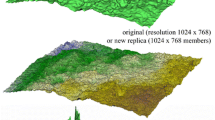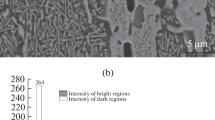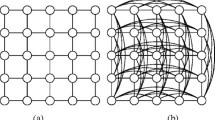Abstract
Fracture surfaces are occasionally modelled by Fourier’s two-dimensional series that can be converted into digital 3D reliefs mapping the morphology of solid surfaces. Such digital replicas may suffer from various artefacts when processed inconveniently. Spatial aliasing is one of those artefacts that may devalue Fourier’s replicas. According to the Nyquist–Shannon sampling theorem the spatial aliasing occurs when Fourier’s frequencies exceed the Nyquist critical frequency. In the present paper it is shown that the Nyquist frequency is not the only critical limit determining aliasing artefacts but there are some other frequencies that intensify aliasing phenomena and form an infinite set of points at which numerical results abruptly and dramatically change their values. This unusual type of spatial aliasing is explored and some consequences for 3D computer reconstructions are presented.
Graphical Abstract
Fourier’s replicas of scanned surfaces correctly reproduce all morphological features only if the number N of harmonic terms in the Fourier sum does not exceed a critical value derived from the Nyquist frequency of the scanned original. Incorporating harmonic terms of higher frequencies in the Fourier sum, an abrupt increase of aliasing effects occurs whenever the frequencies in the Fourier sum reach even multiples of the Nyquist frequency. Illustration N = 50 represents a correct reproduction whereas illustrations N = 228 and N = 440 show critical abrupt increases of aliasing artifacts.











Similar content being viewed by others
References
Gottlieb, D., & Shu, C. W. (1997). On the Gibbs phenomenon and its resolution. SIAM Review, 39, 644–668.
Gottlieb, D., Shu, C. W., Solomonoff, A., & Vandeven, H. (1992). On the Fourier partial sum of a nonperiodic analytic function. Journal of Applied Mathematics and Computing, 43(1–2), 91–98.
Gelb, A., & Tanner, J. (2006). Robust reprojection methods for the resolution of the Gibbs phenomenon. Applied and Computational Harmonic Analysis, 20(1), 3–25.
Eckhoff, K. S. (1993). Accurate and efficient reconstruction of discontinuous functions from truncated series expansions. Mathematics of Computation, 61(204), 745–763.
Eckhoff, K. S. (1995). Accurate reconstruction of functions of finite regularity from truncated Fourier series expansions. Mathematics of Computation, 64(210), 671–690.
Eckhoff, K. S. (1998). On a high order numerical method for functions with singularities. Mathematics of Computation, 67(223), 1063–1087.
Driscoll, T. A., & Fornberg, B. (2001). A Pade-based algorithm for overcoming the Gibbs phenomenon. Numerical Algorithms, 26(1), 77–92.
Boyd, J. P. (2002). A comparison of numerical algorithms for Fourier extension of the first, second, and third kinds. Journal of Computational Physics, 178(1), 118–160.
Huybrechs, D. (2010). On the Fourier extension of nonperiodic functions. SIAM Journal on Numerical Analysis, 47(6), 4326–4355.
Jung, J.-H., & Shizgal, B. D. (2004). Generalization of the inverse polynomial reconstruction method in the resolution of the Gibbs phenomenon. Journal of Computational and Applied Mathematics, 172(1), 131–151.
Mertz, P., & Gray, F. (1934). A theory of scanning and its relation to the characteristics of the transmitted signal in telephotography and television. Bell System Technical Journal, 13(1), 464–515.
Whittaker, J. M. (1935). Interpolatory function theory. Cambridge: Cambridge University Press.
Shannon, C. E. (1949). Communication in the presence of noise. Proceedings of the Institute of Radio Engineers, 37, 10–21.
James, J. F. (1995). A student’s guide to Fourier transforms. Cambridge: Cambridge University Press.
Crow, F. C. (1977). Aliasing problem in computer-generated shaded images. Communications of the ACM, 20(11), 799–805.
Shekarforoush, H., Berthold, M., & Zerubia, J. (1995). 3D super-resolution using generalized sampling expansion. In: International conference on image processing, vol. 2 (pp. 300–303, ISBN 0-8186-7310-9).
Cary, P. W. (1999). Genraized sampling and “beyond Nyquist” imaging. CREWES Research Report, 11, 1–23.
Vaidyanathan, P. P. (2001). Generalizations of the sampling theorem: Seven decades after Nyquist. IEEE Transactions on Circuits and Systems—I: Fundamental Theory and Applications, 48(9), 1094–1109.
Vandewalle, P., Sbaiz, L., Vandewalle, J., & Vetterli, M. (2004). How to take advantage of aliasing in bandlimited signals. In: Proceedings of International Conference on Acoustics, Speech, and Signal, vol. III: Proceedings: Image and Multidimensional Signal Processing Special Sessions (pp. 948–951), Montreal.
Robinson, M. D., Toth, C. A., Lo, J. Y., & Farsiu, S. (2010). Efficient Fourier-wavelet super-resolution. IEEE Transaction on Image Processing, 19(10), 2669–2681.
Farsiu, S., Robinson, D., Elad, M., & Milanfar, P. (2004). Advances and challenges in super-resolution. International Journal of Imaging System and Technology, 14(2), 47–57.
IEEE Signal Processing Magazine, special issue on super-resolution, May 2003.
Coulange, B., & Moisan, L. (2010). An aliasing detection algorithm based on suspicious colocalization of Fourier coefficients. In: Proceedings of IEEE 17th International Conference on Image Processing, (pp. 2012–2016). Hong Kong.
Ben Hagai, I., Fazi, F. M., & Rafaely, B. (2012). Generalized sampling expansion for functions on the sphere. IEEE Transactions on Signal Processing, 60(11), 5870–5879.
Ikuma, T., Kunduk, M., & McWhorter, A. J. (2012). Mitigation of temporal aliasing via harmonic modelling of laryngeal waveforms in high-speed videoendoscopy. Journal of the Acoustical Society of America, 132(3), 1636–1645.
Kreymerman, G. (2012). Adjustable active optical low-pass filter. Applied Optics, 51(2), 268–272.
Cho, S. H., Grazioso, R., Zhang, N., Aykac, M., & Schamand, M. (2011). Digital timing: Sampling frequency, anti-aliasing filter and signal interpolation filter dependence on timing resolution. Physics in Medicine & Biology, 56(23), 7569–7583.
Ficker, T., Martišek, D., & Jennings, H. M. (2010). Roughness of fracture surfaces and compressive strength of hydrated cement pastes. Cement and Concrete Research, 40(6), 947–955.
Ficker, T., Martišek, D., & Jennings, H. M. (2011). Surface roughness and porosity of hydrated cement pastes. Acta Polytechnica, 51(3), 7–20.
Ficker, T., & Martišek, D. (2011). Roughness and fractality of fracture surfaces as indicators of mechanical quantities of porous solids. Central European Journal of Physics, 9(6), 1440–1445.
Ficker, T. (2012). Fracture surfaces and compressive strength of hydrated cement pastes. Construction and Building Materials, 27(1), 197–205.
Watt, W. (2000). 3D computer graphics. London: Pearson Education Limited.
Nakamae, E., Ischiyaki, T., Nishita, T., & Takita, S. (1989). Composing 3D images with antialiasing and various shading effects. IEEE Computer Graphics and Applications, 9, 21–29.
Longhurt, P., Debattista, K., Gillibrand, R. & Chalmers, A. (2005). Analytic antialiasing for selective high fidelity rendering. In: Proceedings of the XVIII Brazilian Symposium on Computer Graphics and Image Processing (pp. 359–366).
Boev, A., Bregovic, R., Damyanov, D. & Gotchev, A. (2009). Anti-aliasing filtering of 2D images for multi-view auto-stereoscopic displays. In: International Workshop on Local and Non/local Approsimation in Image Processing (pp. 97–97), Tuusula.
Wilson, T. (Ed.). (1990). Confocal microscopy. London: Academic Press Ltd.
Škrášek, J. (1986). Základy aplikované matematiky (Basics of Applied Mathematics, part II) (pp. 277–278). Prague: SNTL. (in Czech Language).
Bowman, E. T., Soga, K., & Drummond, W. (2001). Particle shape characterization using Fourier descriptor analysis. Géotechnique., 51, 545–554.
Acknowledgments
This work was supported by the Grant Agency of the Czech Republic under contract no. 13-03403S. One of us (T.F.) was partly supported on the basis of the grant no. LO 1408 within the program I-LO (NPU I) administered by the Ministry of Education, Youth and Sports of the Czech Republic.
Author information
Authors and Affiliations
Corresponding author
Rights and permissions
About this article
Cite this article
Ficker, T., Martišek, D. 3D Image Reconstructions and the Nyquist–Shannon Theorem. 3D Res 6, 23 (2015). https://doi.org/10.1007/s13319-015-0057-4
Received:
Revised:
Accepted:
Published:
DOI: https://doi.org/10.1007/s13319-015-0057-4




